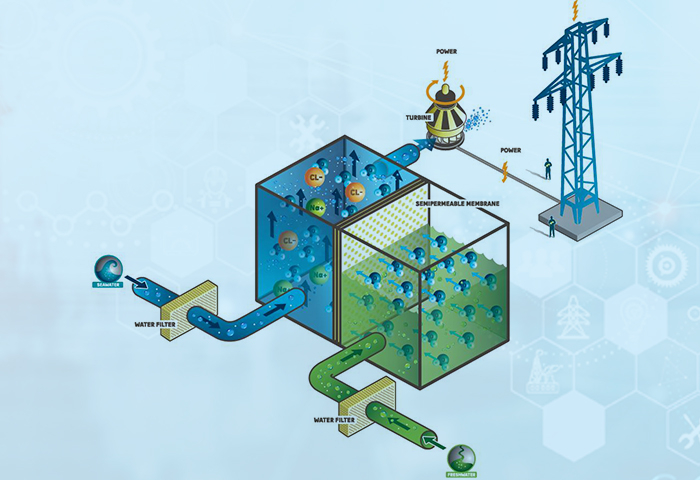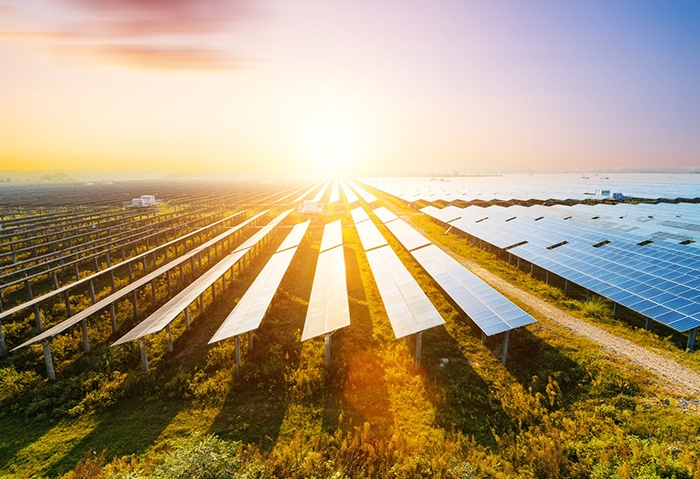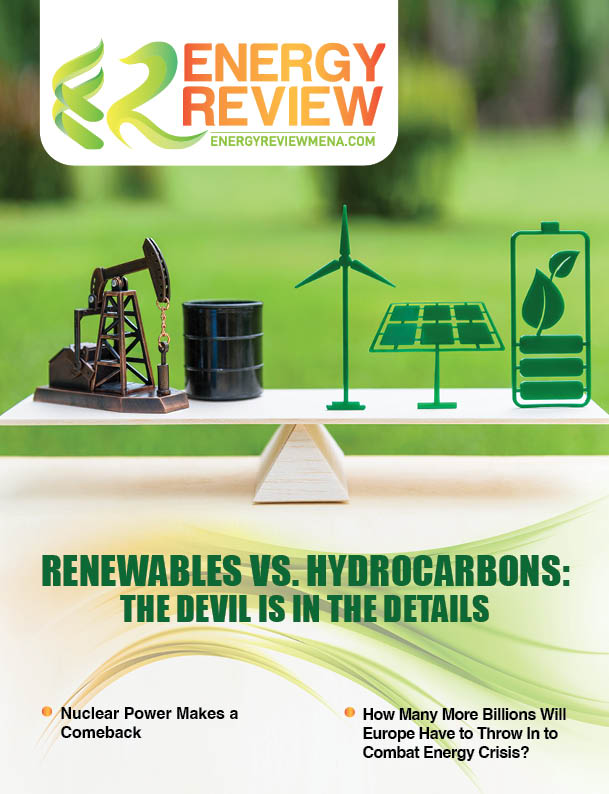The cost of renewable power generation in 2021 was less than the cheapest coal-fired option within the group of 20 major and emerging economies, as the world continues its journey toward a sustainable future, according to an International Renewable Energy Agency report.
The report, Renewable Power Generation Costs in 2021, stated that the cost of electricity from onshore and offshore wind fell by 15% and 13% respectively in 2021. It added that the expense of electricity generation using photovoltaics was also reduced by 13% last year.
“Renewables represent a vital pillar in the global effort to reduce and ultimately phase out fossil fuels, increasing national resilience in the face of fossil fuel price volatility,” said Francesco La Camera, director general of IRENA.
Lately, the world has been giving big attention to solar, geothermal and wind energies while putting aside a truly efficient yet long-forgotten method, worthy to be brought up again: Osmotic power.
Osmotic power, or salinity gradient power, uses the natural process of osmosis to generate electricity. Osmosis is a common biological process in which water moves from a dilute to a concentrated solution, across a semipermeable membrane, to balance the concentrations. This increases the pressure on one side of the membrane. Use of this pressure to generate power was proposed in the 1970s, but a better membrane was needed to make it cost-effective.
Osmosis is a process that has been known for decades but has never been used on a large scale because of its high cost.
In 2009, the Norwegian company Statkraft opened the first prototype. This prototypic membrane is 2000 m2, with an efficiency of 1–2 W/m2, enough power per square meter to boil a kettle. Because the system relies on one side of the membrane being saltier than the other, osmotic power plants must be built where freshwater meets seawater. They are able to generate electricity continually regardless of weather conditions, and no pollutants are produced, which makes them reliable sources of green electricity. A plant the size of a football field (with a 5 million-m2 membrane) would power 30,000 households. Osmotic power is thought to have a global potential of up to 1700 TWh. The full-scale plant was intended to be ready by 2015 and to generate 5 W/m2.
Today, the first pilot power station of electricity said to be osmotic will be established in 2023 in the Rhone delta in the Camargue, announced the National Company of the Rhone (CNR).
Osmotic energy is “generated naturally by the difference in salinity between the fresh water of rivers and the salt water of the sea when they meet,” making it possible to produce entirely renewable electricity, CNR explained.
The first plant, with a power of “several tens of kilowatts in its experimental phase”, should be commissioned at the end of 2023, at the Barcarin lock, in Port-Saint-Louis-du-Rhône, in the south of France.
The experiment, scheduled to last two years, will take place in a “small-scale demonstrator, integrated into two containers,” say CNR and its partner, Sweetch Energy, a Brittany-based start-up that has developed a technology, INOD, to create osmotic electricity at lower cost.
In the INOD technology, the membrane generating the osmotic electricity is made from bio-based materials, which reduces the cost while multiplying performance by 20 and dividing membrane costs by 10, according to Frédéric Storck, director of energy transition and innovation at CNR.
The production capacity of this plant, in the long term, is estimated at about 4 terawatt hours (TWh) per year, or twice the annual consumption of a city like Marseille. While still in the early stages, the best estimates of global production potential of osmotic power exceed 1,600 terawatt hours, or the equivalent of half of Europe’s entire energy demand.
In concrete terms, a system of “pipes and pumps” will allow fresh water and salt water to be transported, which will then be able to mix and produce renewable energy. And the key benefit is that the water circulating in the system will be returned in its entirety to the environment in a natural way.
Indeed, there are enormous benefits with osmotic power, namely that it’s the cleanest, most reliable source of renewable energy on the planet, it is always readily available and more cost-effective than solar or wind power, it has a small ecological footprint and it recycles nature’s resources (seawater or wastewater). It has great potential, but it’s only economically feasible if you reduce the cost of creating it. Energy Recovery’s PX devices reduce energy use, allowing osmotic power plants to produce renewable energy. By recycling the energy typically wasted as part of the reject stream, the PX devices—which operate at 98 percent efficiency—reduce energy use by up to 60 percent, helping to make desalination an affordable solution to global water scarcity.
Different Types of Osmotic Power Technology
There are different types of osmotic power technology used all over the world, namely:
Pressure Retarded Osmosis (PRO): To pressurize saltwater, Pressure Retarded Osmosis (PRO) uses selective diffusion of water across a membrane. On either side of a membrane, freshwater and seawater are arranged, with the seawater side being pressurized. As the pressure and salinity of the seawater side rise, part of it is discharged through a turbine, while the rest is pumped into a pressure exchanger to pressurize the incoming seawater, as shown in the figure below. The main source of energy is the pressure difference across the membrane, which can be as high as 200 meters of the hydraulic head (IEA, 2009). The major research organization investigating PRO is now aiming at membrane performance in the range of 4–6 W/m2. Before the technology can be commercialized, the membrane’s lifetime must be increased to roughly 7 to 10 years. Energy densities of around 1.7 W/m2 have been demonstrated in test modules so far.
Reverse Electrodialysis (RED): Another membrane-based method that uses an electrochemical reaction rather than the osmotic pressure is Reverse Electrodialysis. The device used is made up of a stacked series of membranes, half of which are permeable to sodium and half of which are permeable to chloride, with seawater and freshwater flowing alternately between each pair of membranes. The stack regulates sodium and chloride ion diffusion in the water, causing oxidation and reduction at the iron anode and cathode, respectively. The technology has only been tested on a modest scale (100 mW) so far.
Hydrocratic Ocean Energy: The Hydrocratic Generator is a technology that uses salinity variations to generate power without the use of a membrane. The generator is made up of a tube installed on the seabed with openings in it that allow seawater to enter. A vertically mounted turbine is connected to a generator by a shaft under the pipe.
Freshwater is pumped into the tube at the bottom, and the mixture of freshwater and saltwater causes an upward flow of brackish water that is greater than the initial freshwater injection. This flow drives the turbine, which provides electricity. There have been designs made that use the coolant discharge of power plants or the discharge of waste treatment plants as the primary supply of the necessary freshwater. At sea, basic tests of water flow via the device have been carried out .









